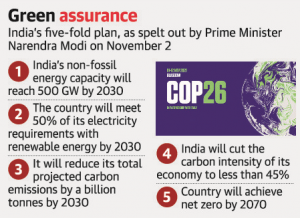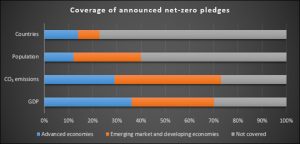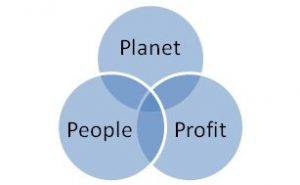DAILY CURRENT AFFAIRS (MAY 8 & 9, 2022)
THE ART AND CULTURE
1. DNA SAMPLES FROM RAKHIGARHI BURIAL PITS SENT FOR ANALYSIS
THE CONTEXT: DNA samples collected from two human skeletons unearthed at a necropolis of a Harappan-era city site in Haryana have been sent for scientific examination, the outcome of which might tell about the ancestry and food habits of people who lived in the Rakhigarhi region thousands of years ago.
THE EXPLANATION:
- The skeletons of two women were found a couple of months ago at mound number 7 (named RGR 7 by the Archaeological Survey of India or (ASI), believed to be nearly 5,000 years old. Pots and other artefacts were also found buried next to them in a pit, part of the funerary rituals back in the Harappan Civilisation era.
- “Seven mounds (RGR 1-RGR 7) scattered around two villages (Rakhi Khas and Rakhi Shahpur) in Hisar district are part of the Rakhigarhi archaeological site. RGR 7 is a cemetery site of the Harappan period when this was a well-organised city. At present RGR 1, RGR 3 and RGR 7 have been taken up for investigation.
- The Rakhigarhi site, about 150 km north-west of Delhi, since it commenced on February 24, 2022, said the DNA analysis will help answer a lot of questions, anthropological or otherwise.
- “The outcome of the DNA analysis will help tell about the ancestry of the people who lived at this ancient city, whether they were native or had migrated from elsewhere to settle. Besides, samples taken from the teeth area would tell about their food habits, what kind of food they consumed and other anthropological patterns related to that human settlement which must have been one of the largest, dating from the Harappan Civilisation period.
- For the collection of DNA samples, experts had done it while wearing special uniform so as to not contaminate the samples. And samples were taken from the teeth region and petrous part of the temporal bone, located at the base of the skull in the ear region.
- The Rakhigarhi site is one of the “five iconic sites” declared by the Central government in the Union budget 2020-21.The cultural span of the Harappan Civilisation can be broadly subdivided into three periods — early (3300 BC to 2600 BC), mature (2600 BC to 1900 BC), and late (1900 BC to 1700 BC), according to archaeological experts.
- Five major urban sites — Mohenjo-daro, Harappa, Ganweriwala, all three sites now in Pakistan, and Rakhigarhi and Dholavira in India — have been identified as regional centres of the Harappan Civilisation.
- Archaeological evidence from the Rakhigarhi site spanning seven mounds is spread across nearly 350 hectares, covering at the present villages of Rakhi Khas and Rakhi Shahpur in Hisar, according to the ASI.
- The Rakhigarhi site, “layers of history”, ranging from the early Harappan to the mature Harappan period can be seen, but compared to the previous excavation, where town planning contours had emerged, in the current excavation, “detailed town planning patterns, street designs, including provision for soak pits” as part of a possible drainage system can be seen.
- ASI officials are banking on the analysis of DNA samples to further unearth the fascinating story of Rakhigarhi, located in the Ghaggar river plain of the seasonal Ghaggar river.
- The two skeletons were found lying in a supine position with head pointing in the north direction. They were both buried with a plethora of pottery and adorned jewellery like jasper and agate beads and shell bangles. A symbolic miniature copper mirror was found buried along with one of the skeletons.
- Animal bones were also found at the site.
- First attempts to archaeologically explore the Rakhigarhi site are said to have been done in the late 1960s.
2. THE SOCIAL ISSUES
THE CONTEXT: A recent World Bank Report has shown that extreme poverty in India more than halved between 2011 and 2019 – from 22.5 per cent to 10.2 per cent. The reduction was higher in rural areas, from 26.3 per cent to 11.6 per cent. The rate of poverty decline between 2015 and 2019 was faster compared to 2011-2015.
THE EXPLANATION:
- Poverty has reduced significantly because of the current government’s thrust on improving the ease of living of ordinary Indians through schemes such as the Ujjwala Yojana, PM Awas Yojana, Swachh Bharat Mission, Jan Dhan and Mission Indradhanush in addition to the Deendayal Antyodaya Yojana-National Rural Livelihood Mission and improved coverage under the National Food Security Act.
- While debates on the World Bank’s methodology continue to rage, it is important to understand how poverty in rural areas was reduced at a faster pace. Much of the success can be credited to all government departments, especially their janbhagidari-based thrust on pro-poor public welfare that ensured social support for the endeavour. It will nevertheless be useful to delineate the key factors that contributed to the success.
- First, the identification of deprived households on the basis of the Socioeconomic and Caste Census (SECC) 2011 across welfare programmes helped in creating a constituency for the well-being of the poor, irrespective of caste, creed or religion. The much-delayed SECC 2011 data was released in July 2015. This was critical in accomplishing the objectives of “SabkaSaath, Sabka Vikas”.
- Since deprivation was the key criterion in identifying beneficiaries, SC and ST communities got higher coverage and the erstwhile backward regions in Bihar, Madhya Pradesh, Rajasthan, Uttar Pradesh, Jharkhand, Odisha, Chhattisgarh, Assam, Rajasthan and rural Maharashtra got a larger share of the benefits. This was a game-changer in the efforts to ensure balanced development, socially as well as across regions.
- Social groups that often used to be left out of government programmes were included and gram sabha validation was taken to ensure that the project reached these groups.
- Second, the coverage of women under the Deendayal Antyodaya Yojana and Self Help Groups (SHG) increased from 2.5 crore in 2014 to over 8 crore in 2018 as a result of more than 75 lakh SHGs working closely with over 31 lakh elected panchayati raj representatives, 40 per cent of whom are women.
- This provided a robust framework to connect with communities and created a social capital that helped every programme. The PRI-SHG partnership catalysed changes that increased the pace of poverty reduction and the use of Aadhaar cleaned up corruption at several levels and ensured that the funds reached those whom it was meant for.
- Third, Finance Commission transfers were made directly to gram panchayats leading to the creation of basic infrastructure like pucca village roads and drains at a much faster pace in rural areas. The high speed of road construction under the Pradhan Mantri Gram Sadhak Yojana created greater opportunities for employment in nearby larger villages/census towns/kasbas by improving connectivity and enhancing mobility.
- Fourth, the social capital of SHGs ensured the availability of credit through banks, micro-finance institutions and MUDRA loans. The NRLM prioritised livelihood diversification and implemented detailed plans for credit disbursement. New businesses, both farm and non-farm livelihoods, were taken up by women’s collectives on a large scale with community resource persons playing crucial hand holding roles, especially with respect to skill development.
- Fifth, in the two phases of the Gram Swaraj Abhiyan in 2018, benefits such as gas and electricity connections, LED bulbs, accident insurance, life insurance, bank accounts and immunisation were provided to 6,3974 villages that were selected because of their high SC and ST populations. The implementation of these schemes was monitored assiduously. The performance of line departments went up manifold due to community-led action. The gains are reflected in the findings of the National Family Health Survey V, 2019-2021.
- Sixth, the thrust on universal coverage for individual household latrines, LPG connections and pucca houses for those who lived in kuccha houses ensured that no one was left behind. This created the Labarthi Varg.
- Seventh, this was also a period in which a high amount of public funds were transferred to rural areas, including from the share of states and, in some programmes, through extra-budgetary resources.
- Eighth, the thrust on a people’s plan campaign, “Sabki Yojana Sabka Vikas” for preparing the Gram Panchayat Development Plans and for ranking villages and panchayats on human development, economic activity and infrastructure, from 2017-18 onwards, laid the foundation for robust community participation involving panchayats and SHGs, especially in ensuring accountability.
- Ninth, through processes like social and concurrent audits, efforts were made to ensure that resources were fully utilised. Several changes were brought about in programmes like the MGNREGS to create durable and productive assets. This helped marginal and small farmers in improving their homesteads, and diversifying livelihoods.
- Tenth, the competition among states to improve performance on rural development helped. Irrespective of the party in power, nearly all states and UTs focussed on improving livelihood diversification in rural areas and on improving infrastructure significantly.
- All these factors contributed to improved ease of living of deprived households and improving their asset base. A lot has been achieved, much remains to be done. The pandemic and the negative terms of trade shock from the Ukraine crisis pose challenges to the gains made in poverty reduction up to 2019.
THE POLITY AND GOVERNANCE
3. PRESIDENT APPOINTED TWO NEW JUDGES
THE CONTEXT: Justices Sudhanshu Dhulia and Jamshed Burjor Pardiwala took oath as Supreme Court judges on 09th May.They would be judges 33 and 34, completing the sanctioned judicial strength of the court.
THE EXPLANATION:
- Chief Justice of India N.V. Ramana read out the oath of the constitutional office to the two new judges in a brief, solemn ceremony held in an auditorium of the Supreme Court additional building complex.
- Other Supreme Court judges were in attendance on the dais. Justice Dhulia was sworn in first followed by Justice Pardiwala. They would be judges 33 and 34, completing the sanctioned judicial strength of the court.
- Justice Dhulia is the second judge to be elevated from Uttarakhand High Court. The grandson of a freedom fighter who took part in the Quit India Movement, Justice Dhulia, who hails from Madanpur, a remote village in Pauri Garhwal district, was elevated as a judge of the High Court of Uttarakhand in November 2008.
- He later became the Chief Justice of the Gauhati High Court on January 10, 2021.
- Justice Pardiwala would be the sixth member of the Parsi community to become a Supreme Court judge.
- A fourth generation legal professional in his family, his father, Burjor Cawasji Pardiwala, had briefly served as the Speaker of the Seventh Legislative Assembly of Gujarat besides being a lawyer.
- The President appointed the two judges on May 7 within only a couple days of the Supreme Court Collegium’s recommendation last week.
- With Justices Dhulia and Pardiwala, the Ramana Collegium has successfully seen to the appointment of a total 11 judges to the Supreme Court since August 2021. A substantial feat considering that his immediate predecessor was not able to appoint even one judge to the Supreme Court.
- Of the 11 judges, Justice B.V. Nagarathna, is in line to be the first woman Chief Justice of India, albeit for 36 days, in 2027.
THE ENVIRONMENT AND ECOLOGY
4. FUTURE LOOMS DARK FOR 48% OF BIRD SPECIES
THE CONTEXT: According to The State of the World’s Birds 13.5% of 10,994 recognised extant species are currently threatened with extinction.
THE EXPLANATION:
- Humans eat 14% of the world’s surviving species of birds. However, this is not the only reason why 48% of the extant bird species are undergoing population decline.
- The State of the World’s Birds, an annual review of environmental resources published on May 5, has attributed the threat to almost half of the 10,994 recognised extant species of birds to the expanding human footprint on the natural world and climate change.
- The degradation and loss of natural habitats as well as direct over exploitation of many species are the key threats to avian biodiversity.
- The use of 37% of the surviving bird species as common or exotic pets and 14% as food are examples of direct over exploitation, the report indicates.
- The review found that 5,245 or about 48% of the existing bird species worldwide were known or suspected to be undergoing population decline. While 4,295 or 39% of the species had stable trends, about 7% or 778 species had increasing population trends. The trend of 37 species was unknown.
- The study underlines bird watching, a global pastime involving millions of people, as a form of avian conservation but warns of “local negative impacts” of bird feeding valued at $5-6 billion per year and growing by 4% annually.
- The caution is for some non-provisioned species via trophic cascades, an “ecological phenomenon triggered by the addition or removal of top predators and involving reciprocal changes in the relative populations of predator and prey through a food chain, which often results in dramatic changes in ecosystem structure and nutrient cycling”.
- “Avian diversity peaks globally in the tropics and it is there that we also find the highest richness of threatened species. We know a lot less about the fortunes of tropical bird species than we do about temperate ones, but we are now witnessing the first signs of a new wave of extinctions of continentally-distributed bird species, which has followed the historic loss of species on islands like the dodo”.
- Apart from tropical forests, the threat of natural grasslands has been particularly worrying for North America, Europe and India. “If unique ecosystems like grasslands are to retain their diverse bird life, governments and research groups must prioritise such landscapes and their inhabitants for conservation and ensure that they do not become plantations or woodlands,”.
- Because birds are highly visible and sensitive indicators of environmental health, we know their loss signals a much wider loss of biodiversity and threat to human health and well-being, he added.
- The State of the World’s Birds says 13.5% of 10,994 recognised extant species are currently threatened with extinction
- The degradation and loss of natural habitats, as well as direct overexploitation of many species, are the key threats to avian biodiversity
- Apart from tropical forests, the threat of natural grasslands has been particularly worrying for North America, Europe, and India
5. IS LA NINA A FAIR-WEATHER FRIEND OF OUR COUNTRY?
THE CONTEXT: In most years, meteorologists consider the La Nina to be a friend of India. The phenomenon associated with below normal sea surface temperatures in the eastern and central Pacific Ocean, makes the summer monsoon wetter and the winter colder unlike its evil twin, the El Nino, or a warming phenomenon that frequently dries up monsoon rains over India.
THE EXPLANATION:
- This year, however, the La Nina is being blamed for worsening perhaps the longest spell of heatwaves from March to April in north, west and Central India.
- Formally known as the El Nino Southern Oscillation (ENSO), the La Nina-El Nino phenomenon follows a periodic pattern that roughly lasts three years.
- During a La Nina winter, a north-south pressure pattern sets up over India and normally this influences the trade winds that bring rains to India. However, because the La Nina didn’t peak, the sea surface temperatures continued to be cold and this drove hot westerly winds and blasts of hot air from the Middle East into Pakistan and India.
- The north-south pressure pattern has been persisting over India, with La Nina extending its stay over the Pacific. This has definitely impacted the weather over India, which has been seen even during 1998-2000 when La Nina had persisted for three years.
- While land temperatures over India begin rising in March, they are usually punctuated by western disturbances, or moisture from the Mediterranean region that fall as rain over north and western India. For these currents to make it as far as India, they need a significant difference in temperature between Europe and the latitudes over India. Partly due to La Nina, this temperature difference was absent and so the western disturbances that came to India were weak with hardly any rain.
- According to a 2021 report by the Ministry of Earth Sciences, ‘Assessment of Climate Change over the Indian Region’, all India averaged frequency of summer heatwaves is expected to rise to about 2.5 events per season by the mid-21st century, with a further slight rise to about 3.0 events by the end of 21st century under current trajectory of greenhouse gas emission.
THE ECONOMIC DEVELOPMENT
6. WHAT IS THE DEBATE AROUND STAR RATINGS FOR FOOD PACKETS MOOTED BY FSSAI?
THE CONTEXT: The Food Safety and Standards Authority of India (FSSAI) is expected to issue a draft regulation for labels on front of food packets that will inform consumers if a product is high in salt, sugar and fat. It is expected to propose a system under which stars will be assigned to a product, which has earned the ire of public health experts and consumer organisations who say it will be misleading and ineffective. Health experts are demanding that the FSSAI instead recommend the “warning label” system which has proven to have altered consumer behaviour.
THE EXPLANATION:
- In the past three decades, the country’s disease patterns have shifted. While mortality due to communicable, maternal, neonatal, and nutritional diseases has declined and India’s population is living longer, non-communicable diseases (NCDs) and injuries are increasingly contributing to the overall disease burden. In 2016, NCDs accounted for 55% of premature death and disability in the country.
- Indians also have a disposition for excessive fat around the stomach and abdomen which leads to increased risk of cardiovascular disease and type 2 diabetes. According to the National Family Health Survey-5 (2019-2021), 47.7% of men and 56.7% of women have high risk waist-to-hip ratio. An increased consumption of packaged and junk food has also led to a double burden of under nutrition and over nutrition among children. Over half of the children and adolescents, whether under-nourished or with normal weight, are at risk of cardiovascular diseases, according to an analysis by the Comprehensive National Nutrition Survey in India (2016-2018).
- Reducing sugar, salt, and fat is among the best ways to prevent and control non-communicable diseases. While the FSSAI requires mandatory disclosure of nutrition information on food packets, this is located on the back of a packet and is difficult to interpret.
- At a stakeholder’s meeting on February 15, 2022, three important decisions were taken on what would be the content of the draft regulations on front-of-package labelling. These included threshold levels to be used to determine whether a food product was high in sugar, salt and fat; that the implementation will be voluntary for a period of four years before it is made mandatory; and that the health-star rating system would be used as labels on the basis of a study commissioned by the FSSAI and conducted by IIM-Ahmedabad.
- The food industry agreed with the FSSAI’s decision on the issue of mandatory implementation and use of ratings, and sought more time to study the issue of thresholds. The World Health Organization representative said the thresholds levels were lenient, while the consumer organisations opposed all three decisions.
- The biggest contention is over the use of a health-star rating system that uses 1/2 a star to five stars to indicate the overall nutrition profile of a product.
- In a health-star rating system, introduced in 2014 in Australia and New Zealand, a product is assigned a certain number of stars using a calculator designed to assess positive (e.g., fruit, nut, protein content, etc) and risk nutrients in food (calories, saturated fat, total sugar, sodium).
- Scientists have said that such a system misrepresents nutrition science and the presence of fruit in a fruit drink juice does not offset the impact of added sugar. Experts say that so far there is no evidence of the rating system impacting consumer behaviour. The stars can also lead to a ‘health halo’ because of their positive connotation making it harder to identify harmful products. Over 40 global experts have also called the IIM-Ahmedabad study flawed in design and interpretation.
- There are many other labelling systems in the world, such as “warning labels” in Chile (which uses black octagonal or stop symbols) and Israel (a red label) for products high in sugar, salt and fat. The ‘Nutri-Score’, used in France, presents a coloured scale of A to E, and the Multiple Traffic Light (MTL), used in the U.K. and other countries depict red (high), amber (medium) or green (low) lights to indicate the risk factors. Global studies have shown a warning label is the only format that has led to a positive impact on food and beverage purchases forcing the industry, for example in Chile, to reformulate their products to remove major amounts of sugar and salt.
- The FSSAI is expected to make its draft regulations on front-of-package public soliciting comments from all stakeholders. The FSSAI’s scientific panel comprising independent experts will study these comments and make its proposal. Following this, it will go to a scientific committee, the FSSAI and the Health Ministry before the regulations are tabled before Parliament.
- The debate on front-of-package labelling has once again raised questions on the influence of the industry on the food regulator.
- Reducing sugar, salt, and fat is among the best ways to prevent and control non-communicable diseases. While the FSSAI requires mandatory disclosure of nutrition information on food packets, this is located on the back of a packet and is difficult to interpret.
- The Food Safety and Standards Authority of India (FSSAI) is expected to issue a draft regulation for labels on front of food packets that will inform consumers if a product is high in salt, sugar and fat
- The debate on front-of-package labelling has once again raised questions on the influence of the industry on the food regulator.
THE PRELIMS PRACTICE QUESTIONS
QUESTION FOR 8 & 9th MAY 2022
Q. Which of the following pairs is/are correctly matched?
- Rakhigarhi– Haryana
- Dholavira – Gujarat
- Alamgir– Rajasthan
Select the correct answer using the code given below:
a) 1 only
b) 1 and 2 only
c) 2 and 3 only
d) 3 only
ANSWER FOR THE 7TH MAY
Answer: A
Explanation:
- Statement 1 is correct: The Total Fertility Rate (TFR) at national level in India has gone below replacement levels.
- Statement 2 is incorrect: There are five States — Bihar (2.98), Meghalaya (2.91), Uttar Pradesh (2.35), Jharkhand (2.26) Manipur (2.17) — in India which are above replacement level of fertility of 2.1 as per the national report of the NFHS-5, by the Union Health Ministry.



